Wide, wide world: Your guide to panoramic cameras
This is where it becomes odd. One would think, panoramic cameras were a landscape photographer's dream. They definitely are – in theory. In real life, I don't see an awful lot of them around. In fact, I don't see them at all. They seem like curios, expensive toys, whimsical creations, you got the idea. Still, if you are willing to own one, there are quite a few options.
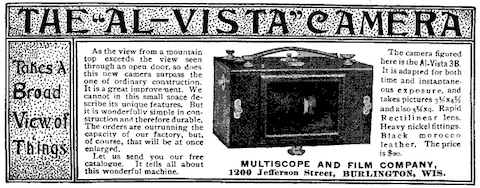 Swing-lens panoramic camera, around 1900
Swing-lens panoramic camera, around 1900From The Atlantic Monthly, v.86 (1900), Cornell University Library
You may want to rotate your phone in order to improve your browsing experience on this site.
Quick links
Panoramic cameras: An introduction
Our fascination with panoramic images is easy to understand – in the end, this is the way we see the world. When it comes to landscape photography, the conventional image format is simply too narrow compared to what we recall from the reality.
This tightness of the ubiquitous imagery and the unconscious desire to overcome its limits were probably the main reasons behind the immediate success of CinemaScope after it first hit the screens.
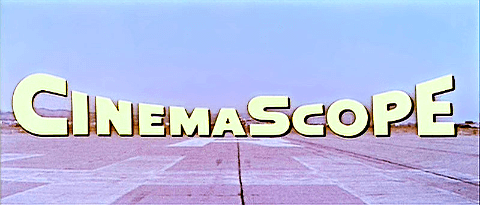 CinemaScope logo from The High and the Mighty trailer, 1954
CinemaScope logo from The High and the Mighty trailer, 19542.35:1 panoramic format
While not "officially" specified, a panoramic image would have an aspect ratio greater than 2:1, meaning its longer size should be at least twice the shorter one. Stitching together two images from a standard camera will suffice – even when working with the more square-like 4:3 format and taking into account some overlapping along the edge.
This is actually the most common method of panorama creation to date. Whether accomplished in one continuous sweep with the camera and left for completion to its software, or manually composed from several exposures taken by a tripod-mounted rotating camera – this is the way to go for the widest possible prospect.
Specialised panoramic cameras, even those with a full 360° field of view, are much humbler in respect to resulting image dimensions. Still, looking at your massive image print is a hugely satisfactory experience, for the photographer and the owner alike.
Depending on the attached lens, Seitz' Roundshot D3 360° camera can get you an image 164,929x7,500 pixels large. This is rather big indeed. We discuss its sister 6x17 model further down.
From the functional point of view, panoramic cameras can be divided in following groups:
- stationary camera, fixed lens: These work like any conventional camera – just lenses are special, and the frame is wider. Linhofs, Horsemans, and both Fujifilm's GX617 and TX are of this type
- stationary camera, rotating lens: Also known as swing-lens cameras, these mechanically challenging models were in fact the first ones to emerge. The lens is located in the centre of a round drum pierced by a vertical slit running through it. The film spanned along the drum's surface is continuously exposed through the rotating slit. Widelux, Noblex, and Horizon cameras all work in this manner.
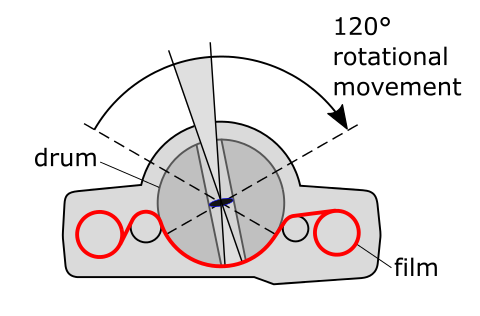 Functional sketch of Horizon 202 swing-lens panoramic camera
Functional sketch of Horizon 202 swing-lens panoramic camera- rotating camera, fixed lens: The camera is mounted on a revolving chassis atop a tripod and moves during the exposure. This is the same principle you would apply to create a panoramic image with your smartphone. There is no stitching involved in this case, though. The resulting image comes out in one [big] piece. Seitz Roundshot models operate in this way.
The market for panoramic cameras is surprisingly quite alive, given that they are rather expensive and not that prominent on location. While models still in production are rare, used discontinued pieces are readily available. Scouting them is not much of a problem – there are plenty of choices at all the usual suspects online.
Below is the discussion of some popular panoramic cameras, both modern and of yore.
Fujifilm TX/Hasselblad XPan
These are probably the most renowned from the gang. Launched in 1998, the original model was able to record medium format-sized, 65mm wide frames onto the standard 35mm roll film. A cartridge with 36 standard frames would accommodate 20 panoramic exposures. It was possible to freely switch the image format mid-roll.
In modern terms, it was an interchangeable-lens mirrorless camera. At the time, you would call it a classic rangefinder. The system offered three not very fast lenses, a 45mm f4, a 90mm f4, and as an afterthought, a 30mm f5.6. With the camera set to panoramic, their respective field of view changed to that of 25mm, 51mm, and 17mm lenses.
The first model was more mechanical than electronic, very cumbersome to use, and hugely expensive. Nevertheless, it was released to raving reviews. The successor thankfully introduced the display of shutter speed and horizon indicator in the viewfinder, and further raised the price bar. The production ceased in 2006.
10 years later, they still pop up occasionally on the used market along with inevitable fakes and with seemingly unchanged price tags.
Search at Amazon.com
Serial numbers of all Hasselblad camera bodies and lenses, including those of XPan, follow the same pattern, with the 3rd and the 4th characters indicating the production year. This is encoded with letters from the sequence VHPICTURES – VH stands for Victor Hasselblad – corresponding to digits 1234567890. Any other character in these positions, or something outside the XPan production range from 98 to 06 should tell you to abstain from the deal.
Noblex panoramic cameras
NOBLEX is the brand name of panoramic film cameras produced by Kamera Werk Dresden, Germany. In these, the film wrapped around a curved plane is gradually exposed by a swing-lens with a vertical slit shutter.
The lens drum turns full circle for a single take. In order to evenly expose the film, the lens first spends extra time to accelerate to a constant speed. Therefore, actual time required for each shot is much longer than the selected shutter speed. The fastest possible exposure with the NOBLEX 135, 1/500 s, actually takes 1/4 s. That's a lot even for camera's 29mm fixed-focus lens – hand-held is not much of an option.
An optional hot-shoe mounted light metering and control unit allows for automatic exposure with drum speed adjusted to differently lit image regions.
The models from the above-mentioned family accept 35mm film and render 19 images sized at 24x66mm on a 36-frame roll. This is only seemingly comparable to XPan's output. NOBLEX cameras have a much wider field of view matching that of a 9mm full-frame lens.
Unfortunately, a handy chart of frame sizes from different panoramic cameras on the manufacturer's website seems no longer available. The side-by-side comparison of NOBLEX own systems is still to be found in the internet archive.
NOBLEX PRO cameras from 150 and 175 series are medium-format models producing six and four exposures, respectively, on a 120 film roll.
Unfortunately, I wasn't able to locate any online camera offers save one in New Zealand. Camera Wiki features a page dedicated to Noblex cameras, with nice pictures of the subject.
If you are curious, Russian-made Horizon series of cameras have a similar functionality if not nearly the same quality, nor the price for that matter. They are easy to track down online.
Shop Horizon cameras at Amazon.com
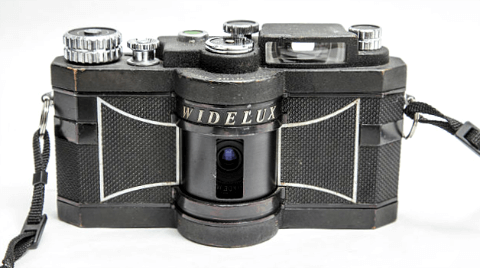 Widelux F7 panoramic camera, 1980s
Widelux F7 panoramic camera, 1980sDiscontinued swing-lens camera
Linhof Technorama
The German specialist manufacturer has two panoramic models in its medium-format range, 612pc II and 617s III. The former produces images with a 2:1 aspect ratio and is compatible with five lenses, the widest being a 56mm f5.6. Its angle of view is comparable with that of a full-frame 18mm lens. The body equipped with the lens and the viewfinder weighs in at 2kg (4.4lbs).
The bigger camera features an aspect ratio of 3:1 and accepts four lenses from 72mm to 250mm, all f5.6. The widest lens is equivalent to a 15mm full-frame, while other options match 19mm, 38mm and 51mm. It's quite a heavy beast tipping the scale at 2.7kg (6lbs) and up when fully equipped.
The cameras are real old school, strictly mechanical and very sturdy. You are heartily invited to stroll through Linhof's sample gallery. (Click around to find works from panoramic cameras.)
The prices are prohibitive, to say the least, but if you can afford one – and a lens to equip it with – you will be able to find some below:
Shop Linhof Technorama in North America
Shop Linhof Technorama in the United Kingdom
Horseman SW
Along the same lines and within the similar price range, Kenko Professional Imaging Co. produce some fine medium-format cameras with their Horseman "super-wide" lineup. The models comprise "standard" 6x17 and 6x12 panoramic options with one essential addition: Horseman SW612D is compatible with digital backs from both Hasselblad and Mamiya. Fitting digital lens units from German specialists Rodenstock and Schneider start at 23mm. This focal length would translate to 15mm full-frame when put atop the right sensor. The cameras will also work with roll-film backs for 6x7 and 6x12 formats.
The SW617 camera is very similar in its specifications to the Technorama of the same format but features a body with only half the counterpart's weight. This may work out as a truly unique selling point. The SW612 film-only camera sports a body 340g (3/4lb) light.
Two sample picture galleries for the SW617 at the producer's website are well worth having a look at.
Seitz 6x17 Digital
If you like science fiction, you got to love this one. The camera doesn't need any medium at all, no film, no sensor, nothing—only light. Its scan back is capable of rendering a scene with 160MP resolution in just one second. The image, all 300MB of it, is immediately transferred to a connected computer. A lens is still required, though.
This is so mind-boggling – telepathy and teleportation both spring to mind – that the price actually doesn't matter. I think, the camera was released in early 2007 at 46,900 SFr (it's Swiss francs). If you are seriously interested, they probably will disclose the current number.
Be sure to check the sample image gallery at manufacturer's. I can't say if this is the camera itself, or all exhibited artists use the same workflow in post, but all images look to me exactly like the camera sounds – unreal. Maybe it's just me, though.
However, given the opportunity, I would try it. 160MP, I'll be damned.
If you wondered, the camera advertisement from the beginning reads as follows:
The "Al-Vista" Camera Takes a Broad View of Things
As the view from a mountain top exceeds the view seen through an open door, so does this new camera surpass the one of ordinary construction. It is a great improvement. We cannot in this small space describe its unique features. But it is wonderfully simple in construction and therefore durable. The orders are outrunning the capacity of our factory, but, of course, that will be at once enlarged.
Let us send you our free catalogue. It tells all about this wonderful machine.
The camera figured here is the Al-Vista 3B. It is adapted for both time and instantaneous exposure, and takes pictures 3½x4½ and also 3½x9. Rapid Rectilinear lens. Heavy nickel fittings. Black morocco leather. The price is $20.
Alas, they don't call it a panoramic camera. "Al-Vista", though, is pretty cool.
Tags: #panoramic #photocameras #photogear
Other landscape photography equipment
- Cameras best suited for landscape photography
- Following the thread about what is most important for landscape photography equipment, let's discuss some worthwhile options.
- Landscape photography ♥ panoramic cameras
- Ever wanted to try one? Read about your current options!
- How to choose a camera lens
- Everything you need to know when looking for a new camera lens, in one place: manufacturers, mounts, formats, types, and how to understand all those mystic lens labels.
- Understanding digital camera lenses – and their reviews
- Understand how to tell good digital camera lenses from the rest when reading their reviews.
- Best camera lenses for landscape photography
- The last article on camera lenses presents some fine choices for selected cameras.
- Filters for landscape photography
- Learn how to use most useful landscape photography filters!
- Polarising filter
- One of the most striking photography filters available is hard to imitate and easy to master. Try it!
Unattributed images on this page are sourced from Wikimedia Commons.
Tell me what you think!
Is it useful 👍? Awful 👎? Leave a message! Your comments help make this site better (and give me a kick—one way or another).
Popular articles
-
A kind of magic
If a digital picture has to be seen in the real world, printed on a real medium and displayed in a real showcase, its transition from RAW to real is better done in an old school image editor. Enter A…
-
A duck for a dog
If you got your own place on the Internet, helping your visitors find what they are looking for is a great way to engage them and keep them staying a bit longer. A custom site search can achieve just …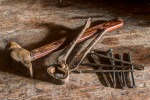
-
"Might as well have the best"
Aiming for better images? Think better lenses! This is your most important piece of gear, so you better get it sorted out. — Need some advice?
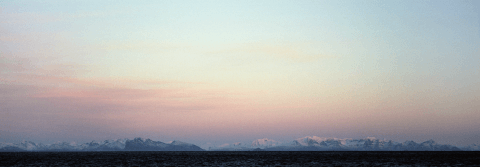
 Become a patron for
Become a patron for